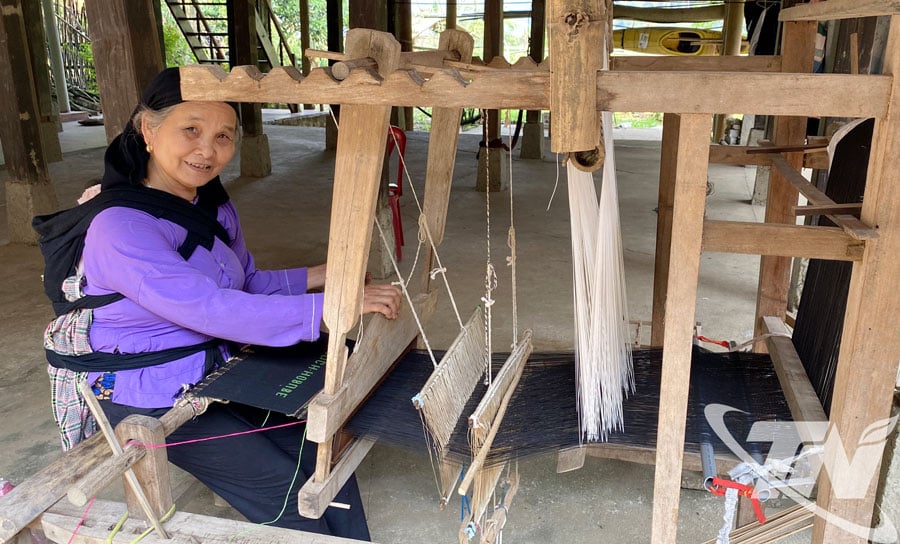 |
| Ms. Trieu Thi Dung is weaving indigo fabric using a traditional Tay loom. |
When traditional crafts are lost
Like many Tay villages in Thai Nguyen , the sound of the loom was once a familiar sound, a rhythm of life associated with the image of the diligent, gentle mothers and grandmothers in Pac Ngoi. Over time, the looms have become less and less frequent, quietly falling into nostalgia.
Beside the time-worn loom, Mrs. Trieu Thi Dung weaves fabric while humming a lullaby to the baby behind her. Her soft singing voice, combined with the creaking sound, seems to take the stranger back many years. At that time, fabric was still very rare and not easy to buy, so almost every Tay family had a loom.
According to Ms. Dung, weaving is not only a labor skill but also a traditional cultural feature of the Tay ethnic group. Brocade products such as: indigo shirts, headscarves, tablecloths, blankets, bags... not only serve daily activities but are also associated with traditional customs and rituals. Tay girls were taught to weave from a young age, so that when they reached adulthood, they could weave fabric to make wedding dresses and blankets for their new families.
To create a piece of fabric, it must go through many meticulous steps. First is planting cotton. When the cotton covers the fields, people pick it, dry it, separate the seeds, then fluff the cotton, then spin it into thread. After the thread is carefully spun, it will be dyed with indigo. Each family usually has a jar of indigo ready to dye the fabric. The dyeing process requires perseverance: the thread must be dipped many times, dried, then dipped again, repeated over and over again to have a durable and even indigo color. Finally, the weaving process is done on a manual loom by hand very carefully and skillfully.
Mrs. Dung shared that with so many steps, in the past, they could only weave 6-7 sets of clothes or 3-4 blanket covers in a year. For women in those days, weaving was not only to make things but also to convey a lot of feelings. Women and mothers wove cloth for their husbands and children to have good clothes and warm blankets for their families. Before getting married, girls had to prepare for the whole year, because on the day they went to the groom's house, each person had to bring: a set of Tay clothes, a blanket cover, a mosquito net... Being so important, weaving beautiful cloth was one of the things that Tay girls in the past strived for and were proud of.
To help us learn more about weaving, Mrs. Dung enthusiastically showed us the large yard of Pac Ngoi Cultural House, where her neighbor (Mrs. Duong Thi Lan) was carefully drying yesterday's newly boiled yarn. Mrs. Lan smiled gently: I stopped weaving for a long time because I found that fabric was easy to buy and cheap. But every time I saw someone in the village weaving, I felt sad, so I ordered a new loom.
Over the past 20 years, weaving in Pac Ngoi has gradually faded away. In conversations with us, the women said that weaving requires meticulousness, and if you concentrate, you can do it very quickly, but few people are willing to learn because weaving takes time and the products are difficult to find places to sell and do not fetch a good price.
“In the past, almost every household had a weaving loom, but now only a few households still keep the craft,” Mrs. Dung said regretfully. Currently, Pac Ngoi has nearly 100 households but only 9 looms left.
Restoring jobs from community tourism
Not wanting to let the sound of the loom fall into nostalgia, the local people and authorities are making efforts to restore the weaving profession, starting from the village's community tourism strengths. In 2022, the commune held a class to preserve and promote the value of intangible cultural heritage in the national intangible cultural heritage list "Traditional hand-weaving of the Tay people" with the participation of nearly 30 students. The class supported the purchase of additional looms and instructed people to weave some gift products suitable for the needs of tourists.
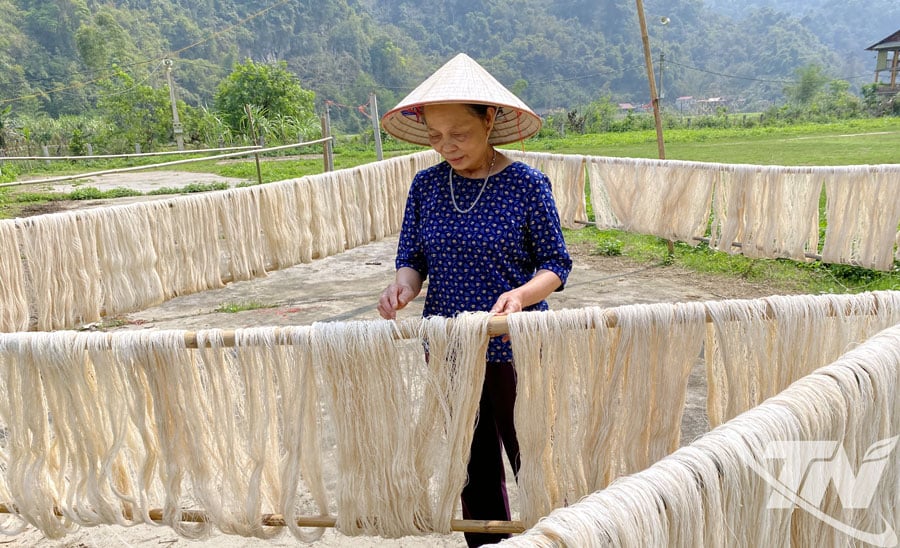 |
| Drying yarn is an important preparation step in traditional weaving. |
Currently, households in Pac Ngoi village are still maintaining and introducing traditional hand-weaving craft and attracting tourists to experience. Many homestays have used indigo costumes and hand-woven products in decoration and tourism experiences. This helps tourists understand the traditional weaving craft and create output for the products.
Mr. Pham Ngoc Thinh, Chairman of Ba Be Commune People's Committee, said: Traditional hand-weaving of the Tay people in Pac Ngoi was recognized as a national intangible cultural heritage by the Ministry of Culture, Sports and Tourism in 2014.
Currently, the People's Committee of Ba Be commune continues to direct specialized agencies to mobilize people to maintain the weaving profession, research, learn and weave products that are both traditional and suitable to the tastes and needs of tourists to serve local tourism. Encourage skilled people to teach younger generations to preserve the national cultural identity. At the same time, connect with OCOP development support programs and community tourism to create stable output for products.
At Ba Be Green Homestay in Pac Ngoi village, in addition to the poetic space, the small corner where the loom is placed also attracts many tourists to visit and experience. It is known that this is the loom of Ms. Trieu Thi Dam (37 years old). Being a Tay ethnic, Ms. Dam has also known how to weave since she was 15 years old, but there was also a long time when she did not follow the profession. In 2020, she ordered a new loom for nearly 4 million VND and has been attached to weaving since then.
Ms. Dam shared: When I started my homestay, I saw that foreign guests really liked handicrafts, so I started weaving them to decorate and sell. Every month I sell a few items, mainly scarves and small bags. But what I was most excited about was that domestic and foreign tourists, when they saw the loom, really liked it and wanted to learn more about the traditional weaving craft of the Tay ethnic people.
Despite many difficulties, when products such as bags, wallets, handkerchiefs... are only sold in small quantities, with an average price of about 200,000 VND each, the Tay women here still do not give up hope. They hope that the traditional weaving profession will not only stop within the family or a few small stalls, but will gradually expand further, linked to tourism and trade, becoming a sustainable livelihood for the community.
Source: https://baothainguyen.vn/van-hoa/202508/tieng-khung-cuivang-trong-long-ban-cu-1f330ec/








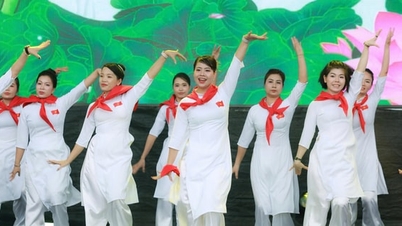

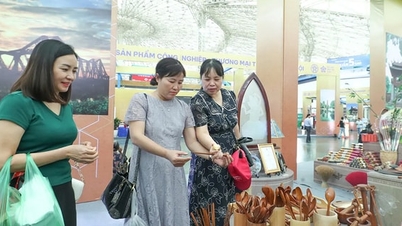




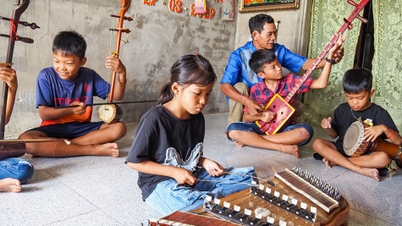

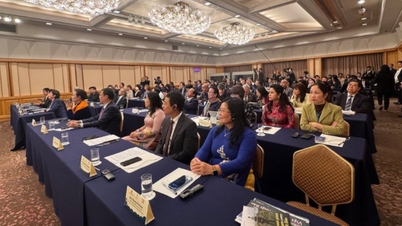

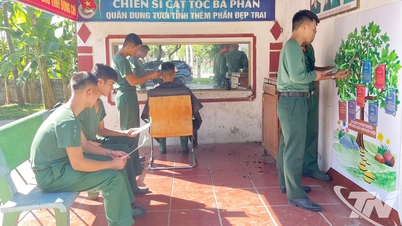
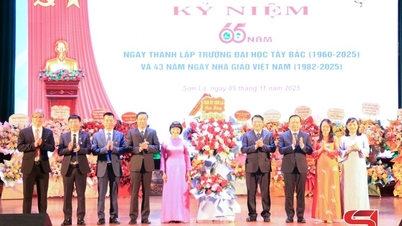

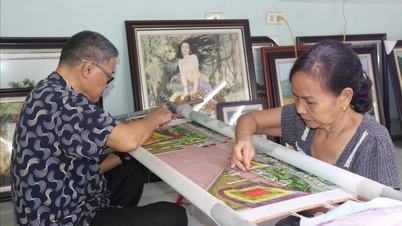








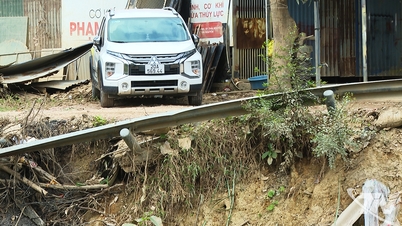






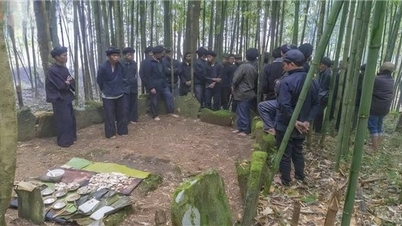









![[Video] Hue Monuments reopen to welcome visitors](https://vphoto.vietnam.vn/thumb/402x226/vietnam/resource/IMAGE/2025/11/05/1762301089171_dung01-05-43-09still013-jpg.webp)





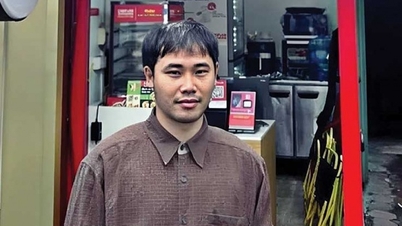







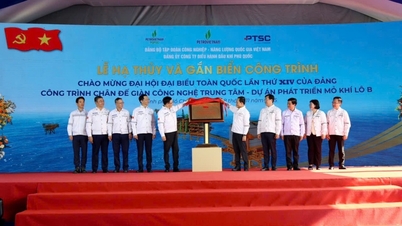





























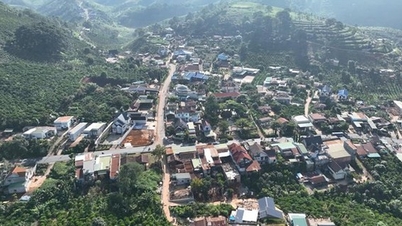



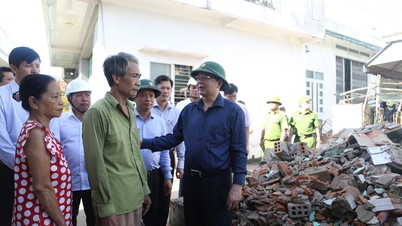


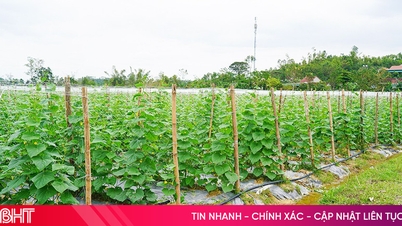

![Dong Nai OCOP transition: [Part 2] Opening new distribution channel](https://vphoto.vietnam.vn/thumb/402x226/vietnam/resource/IMAGE/2025/11/09/1762655780766_4613-anh-1_20240803100041-nongnghiep-154608.jpeg)










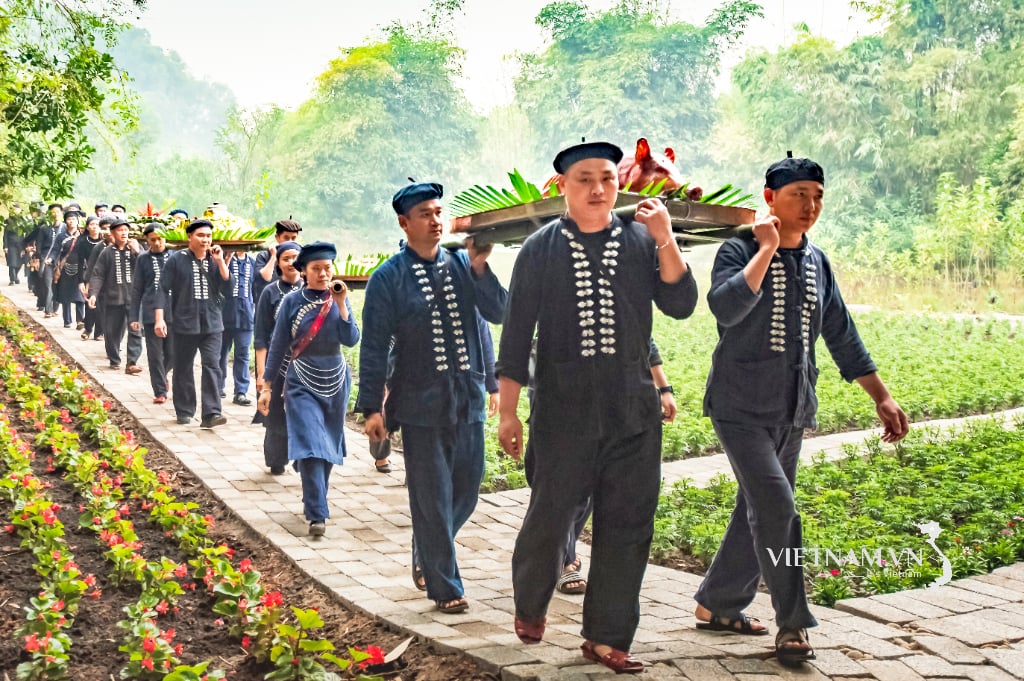


Comment (0)